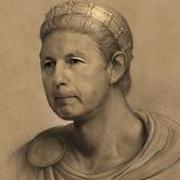“Single Digit”
It seems like most serious golfers, at one time or another, want to be “single digit” players. Of course, once one has achieved that status it becomes a fight to be a low “single digit”, then scratch, then plus...
One problem with this progression is we can’t even truly agree as to what “single digit” means. I read a post where a player was quite elated to have reached an index of 9.9 and now felt he was a “single digit” golfer. Another poster quickly added that 9.4 needed to be achieved as that produced “9” when rounded off. In fact, 9.4 does indeed produce a “9” when placed into the course handicap conversion table for a set of tees slope-rated 113. Another person offered up the idea that one did not achieve “single digit” status unless it was based on the slope from the tips of one’s home course. Personally that is too variable for my taste but if one wanted to create a lofty standard, use a slope of 155, which would require a 6.9 index.
Then there is the issue of longevity. Can someone who achieved 9.9 (or 9.4 or 6.9) for just a brief time period use the title of “single digit”? My inclination is that one should have an index under 10.0 for an extended period of time, say 6-9 months or so. Just as 15 seconds of fame does not make one famous, 15 days of “single digits” does not make one a “single digit” golfer.
My quest for “single digit” status started in the 1980’s. Slope had not been introduced in Michigan at that time so one was a “single digit” when the handicap sticker said “9”. My first handicap was around 16 or 17. I became fixated on playing and recording scores. One had to wait a bit after the 1st of each month to allow for the handicaps to be calculated and the sheets of stickers to be mailed to the course. About the 7th of each month, I would head over to the course to claim my handicap sticker. We all had a credit card-sized plastic holder on which one placed the sticker over the prior month’s sticker. For me, the start of each month was exciting. It was like Christmas or the first day of exams depending on whether the “16” dropped to “15” or surged upward to “18.”
With the growth in the use of the internet for handicapping, the handicap sheet and sticker system is long gone, save for perhaps a few private clubs. By 1990, the simple “12” had been replaced by “12.2”. I kept working at lowering the number and eventually I hit 9.9 or 9.4, and immediately wanted to be lower. In my quest for a lower and lower index I resorted to fudging the numbers. Various rules issues were often skipped over in my effort to produce a lower index. A casual effort would be made at the 3½ foot putt; if it went in, all was good and if it didn’t, well I hadn’t really tried so let’s call it good. Breakfast ball on the first tee? Of course! Eventually I became a vanity handicapper. It was the rare day when I could even come within a stroke or two of shooting my handicap.
Eventually it became clear to me I was a “10” posing as a “6”. I stopped manipulating the data and adhered (mostly) to the Rules. My handicap index is not a badge of honor; it is just a number that somewhat reflects how I played in the past month or so. My golf life is a lot simpler as a former vanity handicapper. ![]()










19 Comments
Recommended Comments
Create an account or sign in to comment
You need to be a member in order to leave a comment
Create an account
Sign up for a new account in our community. It's easy!
Register a new accountSign in
Already have an account? Sign in here.
Sign In Now